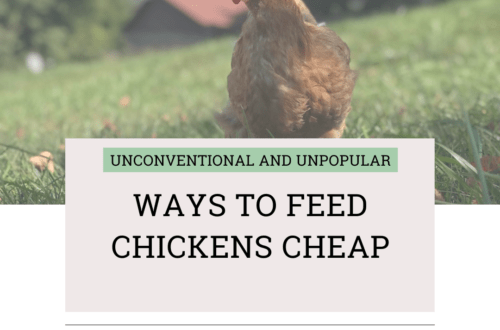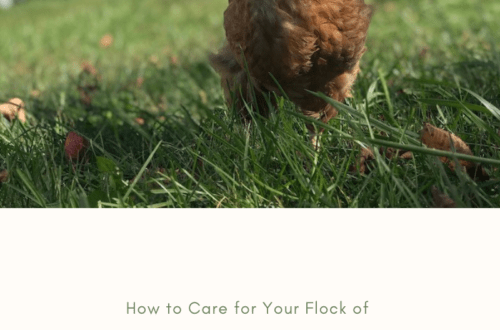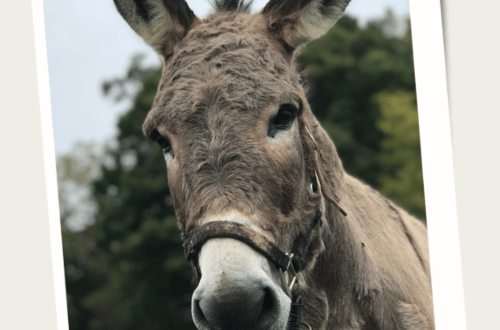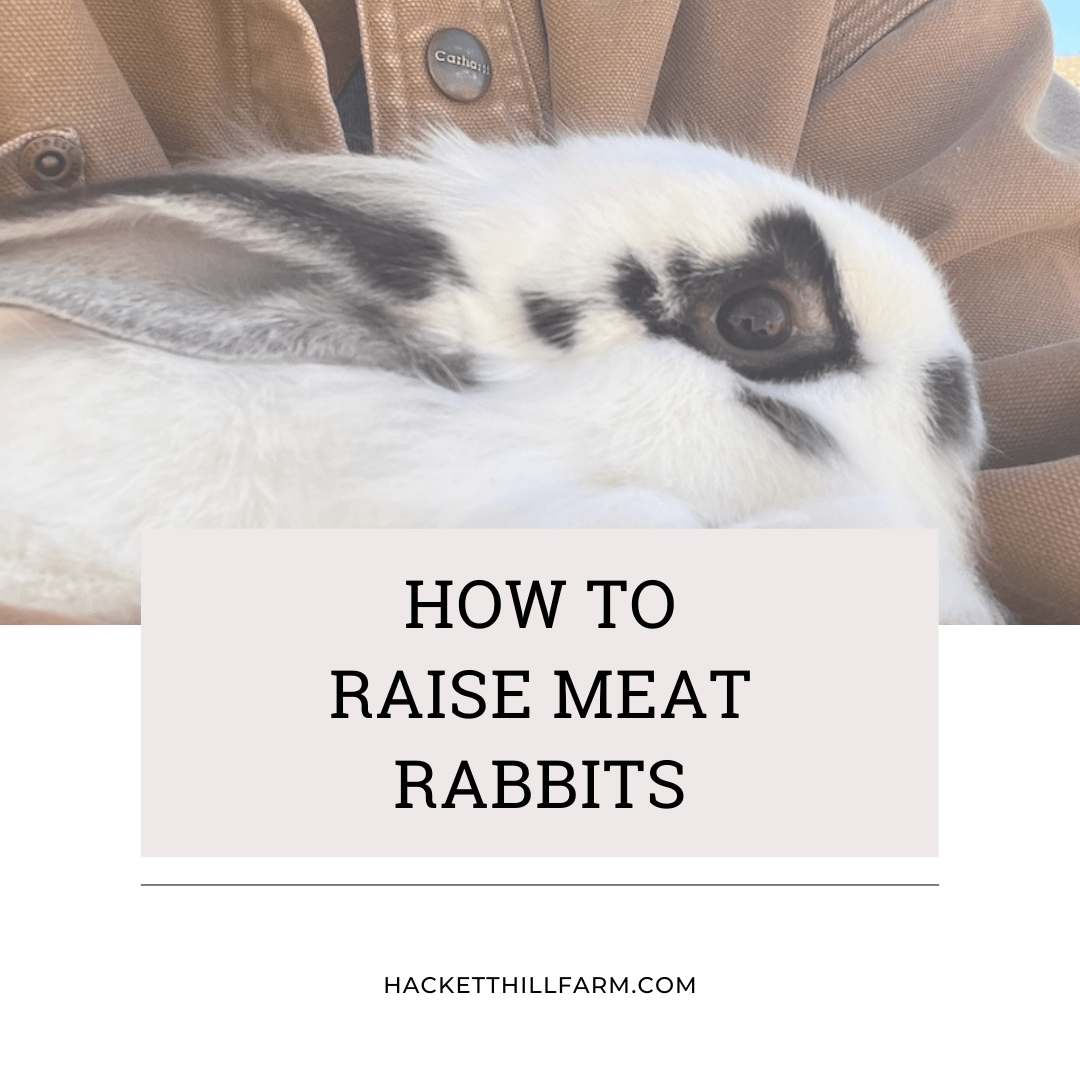
How to Raise Meat Rabbits
As micro farming and homesteading has seen a revival over the past three years, so has the meat rabbit. Raising meat rabbits is perhaps one of the easiest animals to raise regardless of where you are. Meat rabbits require very little space, are extremely quiet, and relatively mess free. Today we’re going to talk about how to raise meat rabbits and some tips we have picked up along the way.

Why Raise Meat Rabbits
Raising rabbits for meat has a lot of benefits, especially for the beginner looking to become less reliant on the grocery store and save money on sustainable and ethically raised meat.
We started raising rabbits about a year ago because of just that. I wanted a way to raise a majority of the meat my family consumes and reduce my overall spend at the grocery store while also ensuring my family is getting the best nutrition available. Raising your own meat is a great way to save some serious cash, but only if you do the butchering yourself. I unfortunately do not have a place where I can butcher a whole cow, so I started researching small animals.
Meat chickens are by far the most popular and we did try our hand at that, however I hated it. They were stinky and you have to buy the chicks every year if you go with the traditional meat birds like Cornish Cross. Meat chickens take about 12 weeks from chick to table which isn’t bad, but they do require some special tools to make butchering easier, like a plucker. These tools are a huge investment and honestly, not in our budget. Overall our experience was not a great one with meat birds. Not saying we may not try again in the future, but probably not in our immediate future.
Rabbits on the other hand are prolific breeders. Meat rabbits have a short gestational period of 30 days and can kit upwards to 12 babies at a time! They then raise the babies for about 5t o 8 week at which point you can pull the babies away and rebreed. They are also ready in about 12 to 14 weeks to be butchered, very similar to a meat chicken.
Rabbits also do not require any special equipment to butcher. I use a bat, twine, Exacto Knife, sharp long blade, a bucket and a cooler and that is really it. My whole set up to butcher is about $30.
I could go on and on about why you should start raising meat rabbits. They are one of my favorite animals right now on the farm.
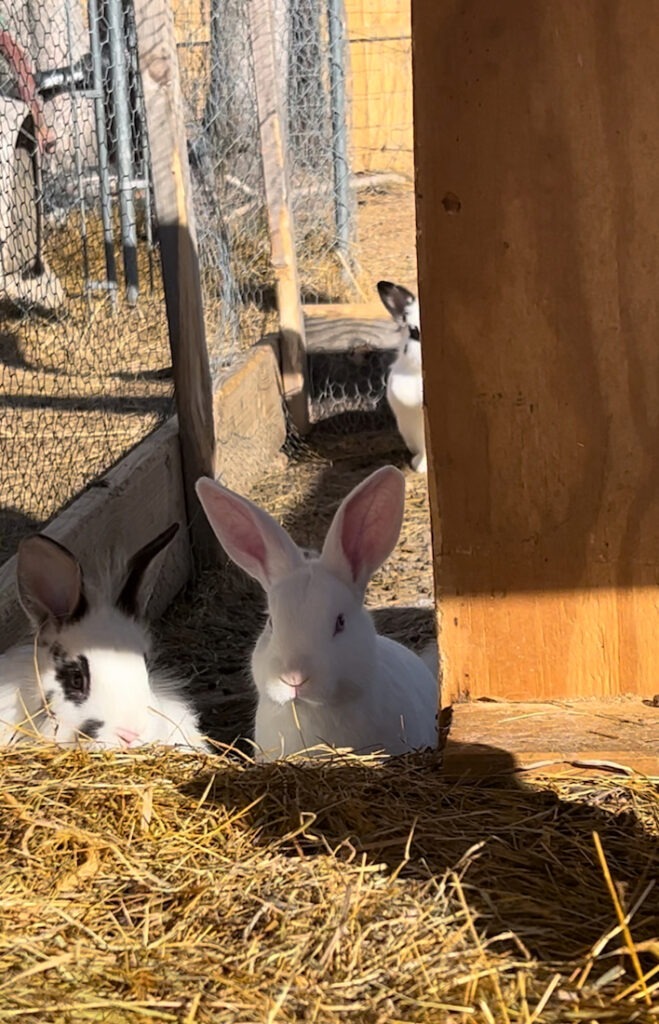
Choosing a Breed
I will probably get a lot of flack for this, but when choosing a breeding pair, choose the pair you can get your hands on for the least amount of money. We were so blessed to be gifted two does and two bucks. They are not a specific breed and there are certainly things I would want to change about their breeding lines, but they were free and they are producing!
There are certain breeds that are more popular for meat rabbits due to size and fur. Some of the most popular breeds are the Silver Fox, D’Argent lines, Rex, Flemish Giants, and New Zealand’s.
One day I would love to have a rabbity full of Creme D’Argents because I think they are beautiful and the size rabbit I would love to have. For now however, we are loving the sweet babes we have right now.
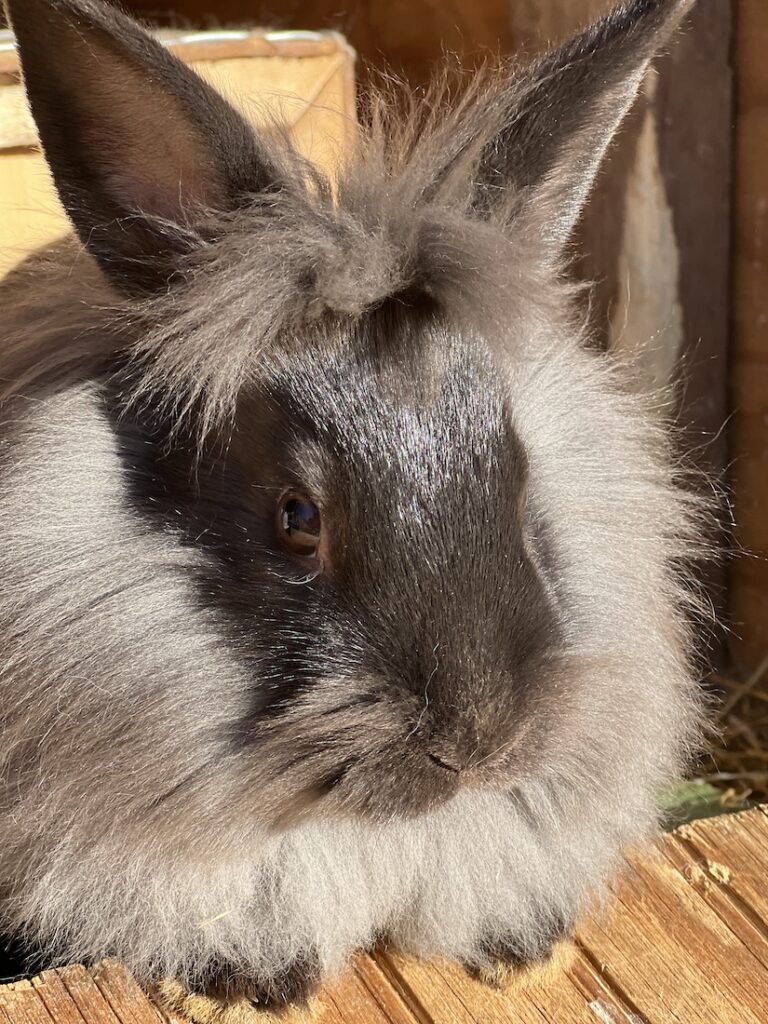
Start Up Needs to Raise Meat Rabbits
One of the great things about raising meat rabbits is that they do not require a huge start up expense. Rabbits require very little space, so even in a small yard they are a great animal to raise. They are also cold hardy, so no need to worry about them in colder temps. They do however not love hot climates so they will need additional protections during the hot months. Meat rabbits require housing, food, and a plan to control their population growth.
Housing for meat rabbits
There are many methods you can use for housing your meat rabbits. You can do a colony method, rabbit tractors, or stationary single small hutches. We do a mixture currently, but are looking to change it up this year.
The important part of any rabbit housing is that it is secure and dig proof. Rabbits will dig out if given the opportunity. We currently are using an old dog kennel with chicken wire surrounding it for our two bucks. Our bucks have lived together since they were babies and do just fine in this living arrangement. Our plan however, is to break them apart and give them their own small elevated hutch.
Another important aspect to the rabbit hutch is ease of access for cleaning. This is something we do not have with our current set up and hate it, which is one of the biggest reasons for us looking to change how we are set up. Again though, it is better to start where you are and grow than to wait and never start.
Nutritional Requirements for Meat Rabbits
Rabbits are fairly easy to feed. They require access to dry hay and approximately a cup of pellets per day. The pellets should have between 12% to 15% protein. When nursing and growing out, rabbits should have free access to feed and hay to ensure healthy growth and maintain body weight.
For treats, rabbits love a variety of fruits and veggies. Avoid an abundance of sugary snacks like carrots and apples and lean more towards leafy greens.
Plan for Population Control
Rabbits are prolific breeders so having a plan for population control is essential. We know that all kits will be culled for meat at 14 weeks. Our plan is very simple. We do not plan to keep any part of the blood lines that we are using currently for additional breeding stock simply because of their tendency for long fur.
Later on down the road when we begin to obtain different breeds we may change that plan, but for now, this is working for us.
The biggest question you need to ask yourself is, can I cull a bunny that I raised. It isn’t easy. It is emotionally taxing, but it is a requirement of the acquiring of these animals for meat purposes, otherwise you will quickly be overrun.
Meat Rabbit Breeding Schedule
Rabbits have a very short gestational period of only 30 days once bred. You will know they are nearing their birthing day when you start to see massive amounts of hair pulled to form their nests. During this time, I give them access to a wooden box that they can build their nest in along with additional dry hay. Babies are born without fur so this is how momma keeps them warm.
After the babies are born momma will need to stay with them around 5 to 8 weeks. At that point, you can pull them into a grow out pen and either let momma rest or rebreed her for another go round.
I do recommend breeding to does at the same time so that if one doe kits a large number of babies you can foster them to the other mom.
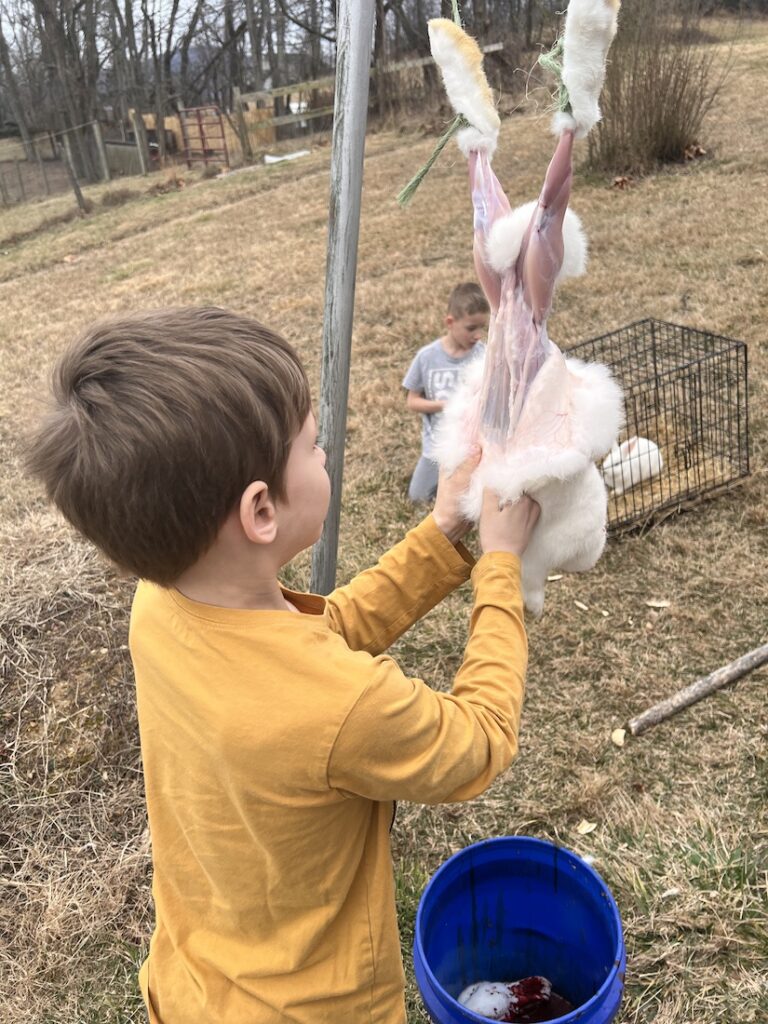
At What Age Do You Butcher Meat Rabbits
Butchering age really depends on your size preference. Most meat rabbits are culled at 10 to 12 weeks and dress out at 1.5 to 2.5 pounds per rabbit and are considered fryers. This is pretty well the industry standard and is the most economical.
Rabbits between 12 weeks to around 6 months of age dress out at 5 to 9 pounds and are considered roasters. These rabbits are best used in slow cooking methods as the meat will be a little more muscular than the fryer weight.
Is it Worth it to Raise Meat Rabbits?
Is raising meat rabbits worth it? Well we sure think so. Meat rabbits are an inexpensive highly nutritious chicken alternative. With all the craziness going on within our commercial food system, we are happy to be able to raise our own meat humanly and sustainably.
We also love the opportunity to teach our children about where their food comes from and empower them to take control of their food system.
We also enjoy the heck out of those sweet babies while we have them and we love making their lives with us wonderful. Our goal is for our animals to have a great life and we are so thankful to them for feeding our family.
We hope this post has helped you in your quest for information on how to raise meat rabbits. For more posts about raising animals, tasty recipes, and homestead life in general, hit subscribe or visit us over on Instagram!


